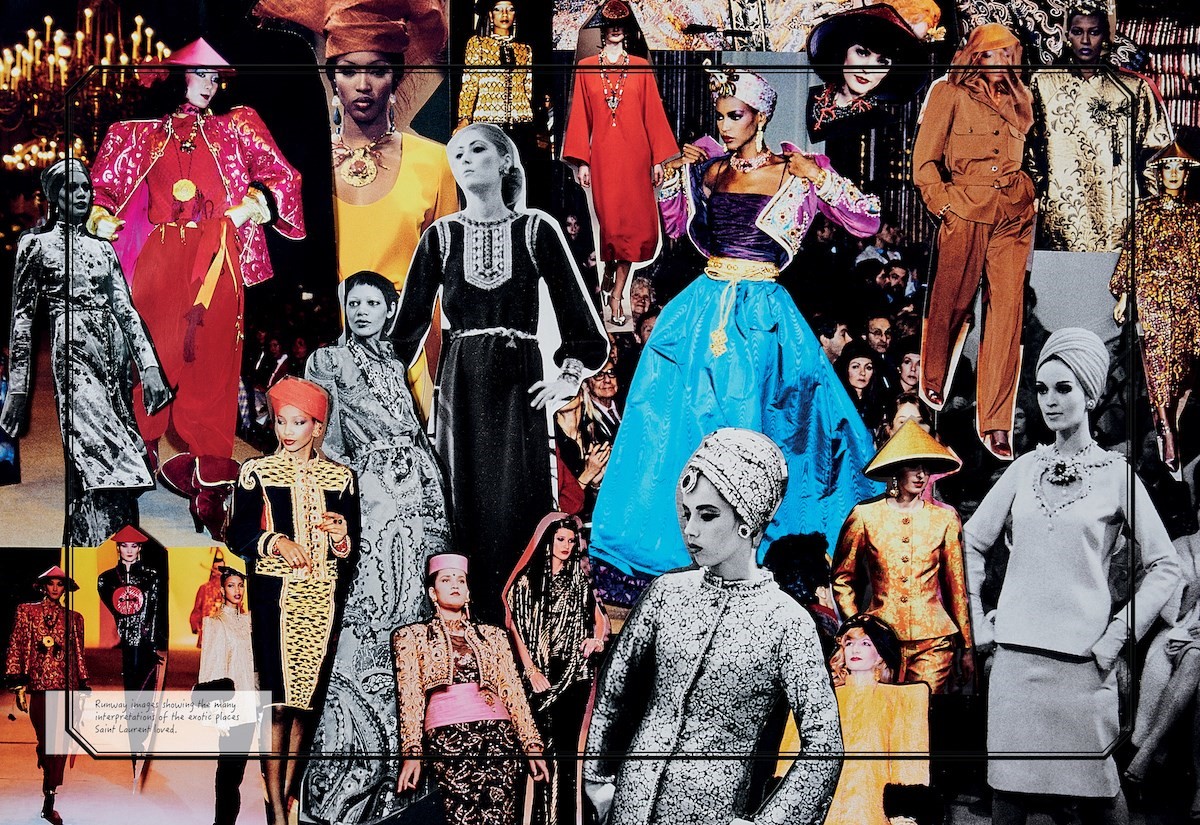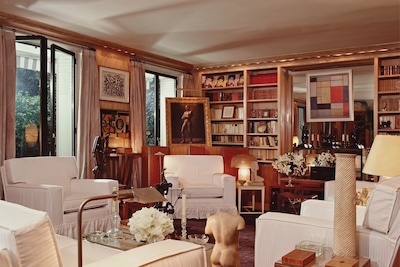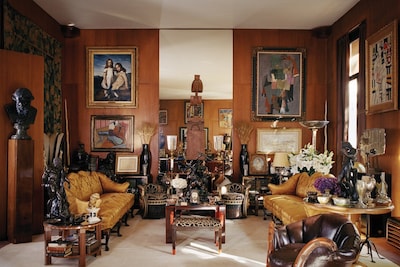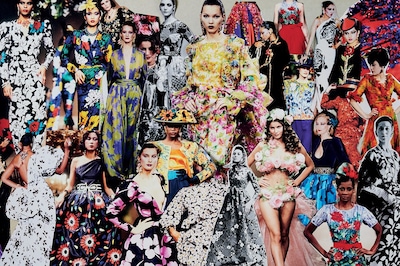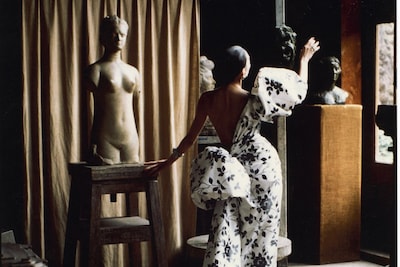As a new Rizzoli book on the legendary couturier is released, we look at a few of the designer’s favourite things; from Kyoto to haute couture, and turning art and flowers into wearable fashion
YSL Lexicon is a window into the life of one of history’s most legendary designers, as well as a glimpse of a bygone era of fashion fantasy. Edited by Cabana magazine founder Martina Mondadori and couturier Stephan Janson, the book is “an ABC of the fashion, life and inspirations of Yves Saint Laurent”.
Having met Saint Laurent when he was just 14, Janson’s writing blends deep knowledge with vivid recollections of the famed designer. His words intermingle with texts from fashion figures, including Hamish Bowles, Caroline Issa and Amy Fine Collins, and authors like Umberto Pasti, Claude Arnaud and Natasha Fraser-Cavassoni. Naturally, given the artistic pedigree of the two editors, the book is a visual goldmine filled with sumptuous imagery, from sketches to swatch scans.
While Yves Saint Laurent has been widely covered in books and films (there are countless books on different facets of his storied career, and he has been the subject of two biopics and two documentaries in the last 15 years), YSL Lexicon nevertheless contributes to the Saint Laurent canon – fleshing out the well-trodden outlines of Saint Laurent’s biography and restoring a sense of the man behind the myths.
Here are five of Saint Laurent’s favourite things; from his love for Kyoto to his revolutionary attitude to haute couture.
Turning Art Into Fashion
It’s clear that Saint Laurent’s love for visual art was deep and abiding. Not only did he fill his home with works by Georges Braque, Isamu Noguchi and Francois-Xavier Lalanne, he also translated fine art onto his clothes. His most famous art look recontextualised the stark coloured rectangles of Piet Mondrian’s Compositions onto modish mini dresses for his Autumn/Winter 1965 couture collection. Saint Laurent would also create a walking art gallery for Spring/Summer 1998, which took inspiration from Cubism via Picasso and Braque, and replicated Van Gogh’s sunflowers and irises.
Haute Couture
Once upon a time, all of the great Parisian designers were couturiers; Saint Laurent was the first of his ilk to launch a ready-to-wear line, Rive Gauche, in 1967. It was couture where Saint Laurent’s creative expression could be fully expressed and, perhaps in testament to his personal affinity for it, his house closed the couture line in 2002 when he retired, continuing ready-to-wear with Tom Ford at the helm (it was only in 2015, under Hedi Slimane, that the Saint Laurent couture line was revived). The Saint Laurent looks that have become most emblematic of his oeuvre – from the lurid fur chubbies of Spring/Summer 1971’s Libération to the folkloric fantasies of Spring/Summer 1976’s Ballets Russes – all spring from couture, rather than ready-to-wear.
Kyoto
In 1963, Saint Laurent was a fledgling designer, only having left the nest of the house of Christian Dior three years previously. Despite disliking travel intensely, he journeyed to Japan, ostensibly to host fashion shows as part of a major deal between his brand and Seibu department stores, but also to see the sakura (cherry blossom) in Kyoto. While his shows were a resounding success – the Tokyo show even making it into Yukio Mishima’s 1963 novel The School of Flesh – according to Janson, it was Kyoto that became Saint Laurent’s favourite memory of Japan, and “throughout his life, he cherished a beautifully bound leather portfolio containing snapshots of the trip.”
Models
While exclusives (brands booking a model to walk only in their show across the whole of fashion month) are common amongst model agencies today, Saint Laurent had a bevy of house models who brought his fabric narratives to life (even if they had previously worked elsewhere – he poached Victoire Doutreleau from Christian Dior and Paule de Mérindol from Chanel). Katoucha Niane, Amalia Vairelli, Khadija Adam Ismail and Mouna Orosemane were all muses for him throughout the 70s and 80s, with Orosemane becoming the first Black model to grace the couture catwalks when she walked for Saint Laurent in 1978.
Flowers
Flowers were something of a YSL signature. As Pasti writes, “In a deep neckline or under the chin, behind an ear, at the ankle, at the waist, in the mouth, at the wrists, in the hair, on a hat or laid on a shoulder, looped inside a belt … the Saint Laurent woman has always worn a flower.” The book’s sketches show a variety of the designer’s floral ornaments, be they appliquéd petals, beaded blooms or delicate buds: Saint Laurent megafans will recognise the simple pencil sketch that became Laetitia Casta’s two-piece rose bouquet ‘wedding dress’ from Spring/Summer 1999.
YSL Lexicon is published by Rizzoli and is out now.
